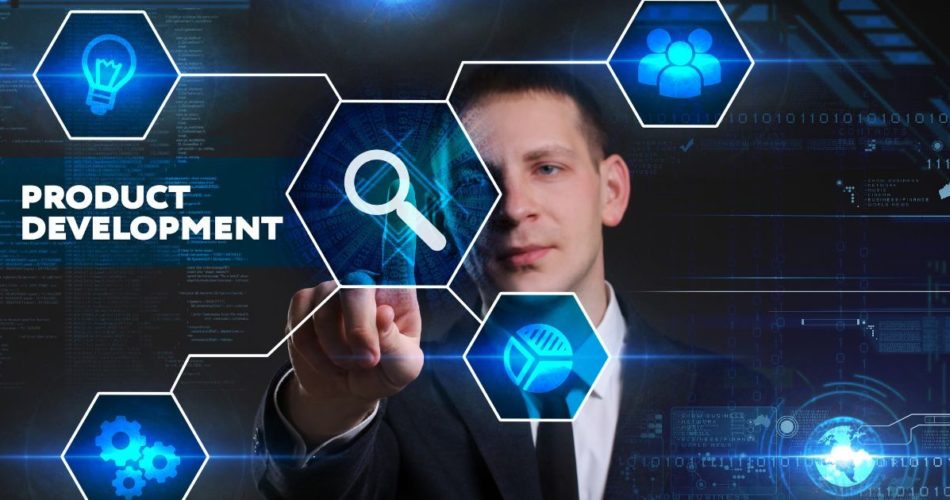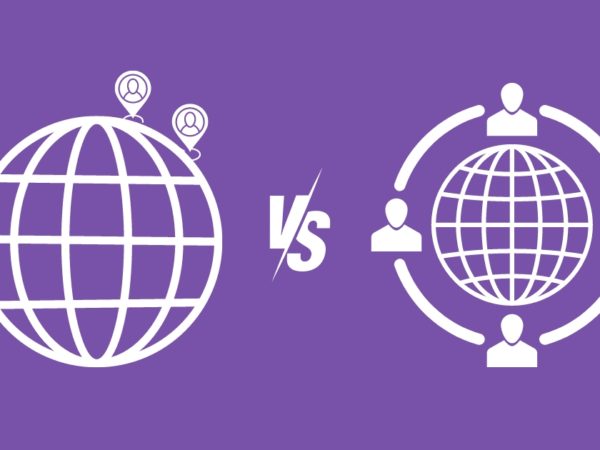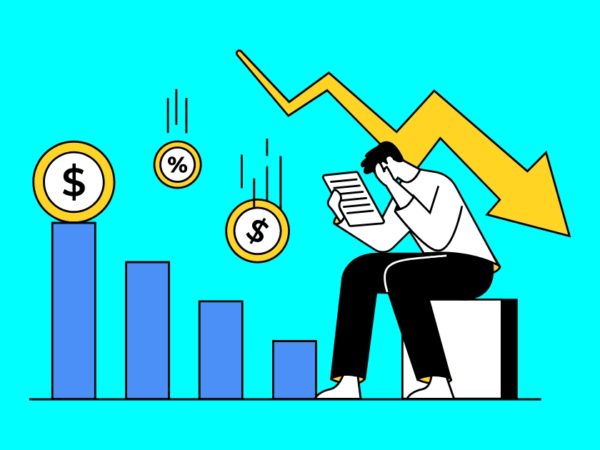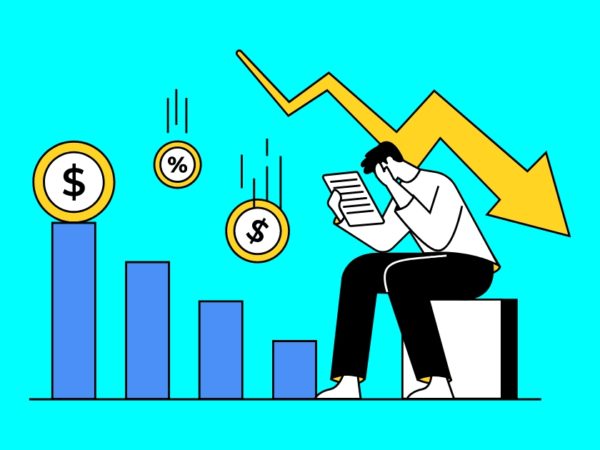Well, over 80% of modern-day businesses employ at least one Software-as-a-Service (SaaS) application. That opens a fantastic opportunity for players in the SaaS market, where revenues can quickly grow at a pace that’s always beyond the wildest projections.
However, a SaaS product development roadmap and strategy for cloud-based software is necessary so you can, if you’re going to outstrip the dark side of the SaaS industry, keep up with its chic benchmarks and beat the competition.
With most software development companies striving to survive amid plenty, it’s only a developer who masters a product development strategy from the beginning who will remain relevant.
Since the SaaS industry may be fast and volatile and the product development side remains a serious challenge even for the leading developers and their managers, you want to know the many variables in play and master a balanced approach.
This guide will help select the best SaaS product development strategy.
Product Development for SaaS
SaaS product development refers to the process involved in creating cloud-based software applications that are hosted on a central server, and users can access them via the Internet. According to Oxford’s Dictionary of Business and Management, the process transforms a market opportunity into a product ready for sale.
Users of SaaS models have no business installing or maintaining the software on their devices as the infrastructure maintenance becomes the SaaS provider’s responsibility. The approach that follows the waterfall model (plan, create, review, release) is process-oriented and will primarily depend upon the skill level of the individual worker and not necessarily the team.
Better still is the agile SaaS product development approach, which, according to the Agile Manifesto, refers to a process whose highest priority is satisfying the customer via an early and continuous delivery system for valuable software.
While the traditional SaaS product development methodology is primarily concerned with taking advantage of existing market opportunities, the agile method is one methodology for creating one or more parts of product development.
Product development is focused on attaining new stages of market opportunities by growing and maturing a SaaS product, which may not necessarily involve software as it is one of the many components or perhaps the significant component, but it’s just that one element.
In agile development, your main concern will be in the sense of software development through processes like understanding requirements, writing code, and deploying features to make software more mature.
The difference between traditional SaaS product development and agile development:
| Factors | Traditional Approach | Agile Approach |
|---|---|---|
| Software Development | Process oriented | People oriented |
| Management Style | Command and control | Leadership and collaboration |
| Team Role Assignment | Based on skill level of team members | Self-organizing teams |
| Communication | Formal | Informal |
| Client’s Role | Important | Critical |
| Process Model | Waterfall, spiral, prototype | Evolutionary approach |
| Project Life Cycle | Based on tasks or activities | Based on software product features |
Best Practices of SaaS Product Development
As SaaS products become increasingly popular and software continuously dynamic because they offer scalability, convenience, and other solutions that address users’ needs, you need a strategic approach to create Unique SaaS products that will gratify the users’ requirements. Among the best practices you need to adopt include the following:
#1. Adopt Agile Methodology
SaaS product development and Agile are tied together at the hip, meaning adopting an agile approach is the best way to promote collaboration, flexibility, and nonstop action. The agile process involves breaking down the cycles into smaller, manageable duplications that create room for constant feedback, adaptation, and frequent course correction.
#2. Understand Your Target Audience
You may have the best product idea, but unless it’s backed by in-depth market and audience research, it will mostly fall flat.
Even when you have a firm grip on your target market, it will be in your best interest to know your potential competition and market segment, including the average price points.
While understanding your market is vital, knowing your audience and their definition of success is more critical.
#3. Prioritize a User Experience (UX) Design
Functionality is critical, and as a result, you must ensure that beyond looking good, your product will be easy to use so it can help your customers. This means prioritizing user-centric design principles when designing your SaaS product to give it an intuitive and delightful user experience.
A proven strategy for product improvement involves investing in activities such as usability testing, model development, and iterative design. This method will help you refine your upcoming SaaS product and guarantee its ability to closely address your users’ expectations.
#4. Implement Continuous Integration/Continuous Deployment (CI/CD)
It would be best to deliberately minimize issues and conflicts by ensuring code changes are integrated and tested regularly and continuously by automating the build, design, and deployment procedures via CI/CD practices.
A continuous and automated release and deployment process facilitates faster and more consistent delivery of updates to users. Moreover, with automation, there’s little chance of bug infiltration besides enhancing the overall product quality.
#5. Prioritize Security and Data Privacy
You must do everything you can to guarantee your customers their private data is safe if you’re going to gain their trust and a niche for your brand. This can be best achieved by jealously safeguarding user data and ensuring the security of your SaaS product.
We recommend following the best industry practices, such as managing access control, encrypting data, and handling susceptibilities.
You want to establish the trust of your users and safeguard their confidential data by regularly updating your privacy regulation and compliance requirements as an irreducible minimum.
The Foolproof Product Development Strategy for SaaS Products
A well-designed and implemented SaaS product development strategy is critical to understanding your users, accurately planning the product design, using your resources effectively, and enhancing your chances for success and survival in a harsh, competitive market.
Whether designing a new product or modifying an existing one before introducing it to the market, implementing essential and effective strategies is imperative.
Following a typical agile development process will motivate your development team to iteratively implement your company’s product development vision by breaking every challenge into more minor, chewable problems.
The foolproof SaaS product process follows a playbook that goes through the following concurrent phases:
SaaS Market Research
While all great things begin with an idea, it’s an open secret that you just can’t pursue all ideas. It’s, therefore, essential that you evaluate all your product ideas and ensure they align with industry trends, customer needs, and market demand.
Take the time to clearly understand how your upcoming product will fare against competitors and what will make it unique in a saturated market. It pays to focus on proven customer needs based on in-depth research and qualitative data that reveals customer demands and opinions.
Product Ideation
The next step involves further shaping your product idea using a prism of stakeholders who understand your customer needs using the market data you have in your hands.
Your product ideation cohort could include SaaS development managers, product designers, and product developers, to name a few. This team combines efforts to create a unique perspective reflecting on customer insights that can be implemented into tangible products that will help you adjust existing prototypes accordingly.
You need to create a diverse team with representation from all departments or business functions so they can bring their relevant experience. It’s at this stage that you and your team generate and filter every idea, highlight user insight, and identify untapped opportunities.
Successful product ideation revolves around user surveys, focus groups, or product interviews you can later analyze and aggregate. You must also implement any existing user feedback if you have existing customers to gain a baseline understanding of potential new customers and real-world product uses.
Determine Product Requirements
After understanding customer requirements, the next step involves determining how your SaaS product will bring you closer to your product requirements.
Business goals should define your project’s strategic roadmap by describing what system or solution you will develop and why. Your product requirements should help you create a high-level, detail-oriented understanding of your projected solution, its prime goal, and any existing project constraints.
Agree upon fundamental product requirements to be included in the product requirement document while keeping in mind that the requirement-gathering process is dynamic since it can introduce new variables.
In your planning, therefore, ensure to leave room for future requirement gathering during the product’s lifecycle while keeping the project scope easily adaptable.
Define the Project Scope
A clearly defined project scope is what ensures your product development stays on track while guaranteeing you will turn in all deliverables on time, within the budget, and according to expectations.
While the complexity of the project and level of detail determine the scope of the project statement, it should always encompass three important parts, namely project objectives, project justification, and main deliverables.
Your scope statement should provide the finer details of every aspect of the project, including the key stakeholders, timelines, project constraints, and all other process elements.
Product Architectural Design
A practical SaaS system architecture is the best launching pad for any scalable and reliable SaaS solution, as your business goals and customer requirements dictate it.
It’s necessary to base your product design on the functionality of your upcoming application by ensuring it impacts all projected aspects and its operational complexity. You may also want to include models that will address the diversity of customer needs.
Choose the Tech Stack
Choose a tech stack for your SaaS solution that covers aspects like server-side technologies, client-side technologies, and cloud services.
The correct tech combination ensures your product secures a niche into the future, besides enabling it to evolve without increasing costs.
Consider the complexity of your software, your existing IT suite, and future maintenance requirements when selecting an appropriate IT stack.
Develop an MMP
Once the groundwork for your SaaS product development is in place, it’s time to identify the high-value features of your product and create priorities for feature release.
Ensure that your must-have features are included in a Minimum Marketable Product (MMP), the upgraded version of the MVP, a product version containing minimum functionality that would be sufficient to hit the market and gain some traction among targeted users.
MMP development precedes prototyping so that UX/UI design teams can produce a visual representation of the MMP before preparing final layouts for more detailed development.
At this stage, every feature of the MMP must be checked thoroughly through continuous testing cycles. Hence, the development team gets critical feedback early enough to ensure faster delivery of the final product.
App Development
Once you’re through with the MMP release, your team needs to follow through with collecting valuable customer feedback they can incorporate into enhancing the final product.
It’s during this stage when the product team adds all the good-to-have functionalities into the SaaS product besides iterating on the MMP based on the user sentiments so they can transform the application into a fully-fledged SaaS solution offering a plethora of features.
The app development stage benefits from ongoing integration and testing cycles. These enable the product development team to continually evaluate the quality of every deliverable as an integral part of the continuous delivery process through early testing.
Delivery
Your team should now be able to deliver new features and updates in small batches as and when they appear, as the team can troubleshoot issues and make the needed releases.
The continuous delivery cycle of SaaS products is necessary as it increases your team’s speed to market since they don’t have to pause development before implementing releases. The result should be your users enjoying a never-ending stream of enhancements and ongoing feature fixes.
Maintenance and Upgrades
There will never be an end to the development of SaaS products as it remains a continuous engine of enhancements and improvements throughout your product’s lifecycle.
The untiring efforts of your support and product management teams must continue monitoring customer behavior, uncover valuable insights, and communicate them to the customer development team so that all feedback is transformed into software upgrade plans.
Furthermore, you want to create a team that’s specifically dedicated to maintaining the SaaS product so it delivers a faultless experience that enables users to accommodate their growing workloads.
Iterative Improvements
If you have a successful SaaS product, remember that product development can always be challenging. Your new SaaS solution must evolve constantly to match the ever-shifting customer needs in a dynamic market.
Integrating tracking and analytic abilities into your SaaS product will enable you to get a better understating of its low-value and high-value features, thereby being able to double down on everything that matters most to your customers.
Tracking tools will ensure your product team can quickly evaluate new releases as far as performance and positive customer responses are concerned, thereby ensuring your SaaS product offers value-packed and customer-first solutions.
Conclusion
The agile product development strategy offers the ideal framework you need when creating new SaaS products or improving the quality and performance of existing ones.
Keenly following these effective strategies will help your company achieve its business objectives, whether you plan to enter new markets, sell more to the existing client base, or win over customers from your competition. Moreover, it offers a practical way to generate revenue and increase profitability.
With careful and deliberate planning, you’ll be able to eliminate or minimize the risk of making avoidable mistakes, thereby ensuring your program delivers projected benefits and measurable objectives whose progress you can review at every stage of product development.
From ideation evaluating technical feasibility to the last stage of product launch, implementing the right product development strategy is your key to success and ensuring you only develop products that meet real customer needs and increase your revenues and profits.
Next, check out our detailed article on SaaS marketing.



